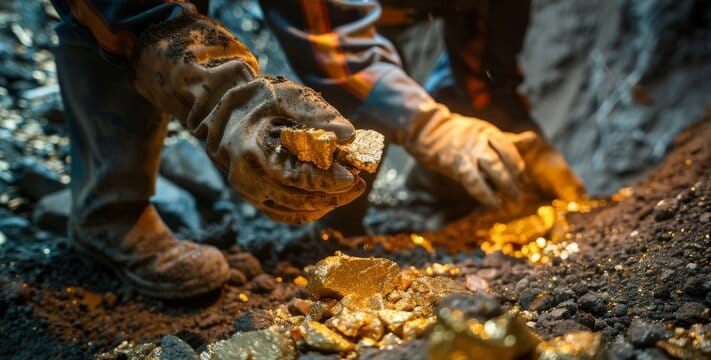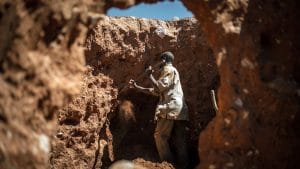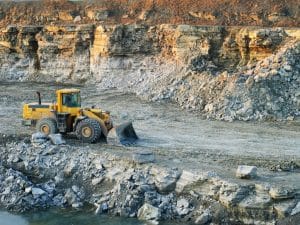Gold has enthralled humans for millennia. Frequently linked with prosperity and achievement, it is bright, expensive. Have you ever pondered, though, how gold is extracted from the ground?
Each appropriate for various types of deposits and locations, different mining techniques are utilized to find and remove gold. Here we will look at the major kinds of gold mining, how they work, and what sets each technique apart.
Gold Mining’s General Look
The method of locating gold and taking it out of the metal from earth’s layers is the process of gold mining. Gold is present naturally in the earth in many forms. These forms include minute particles, flakes, and nuggets.
Moreover, they are mixed with other rocks and minerals. To extract the gold deposits efficiently and safely, mining is an ideal process.
Gold mining falls under two broad kinds:
- Placer mining is the recovery of gold from loose materials like sand and gravel in riverbeds or waterways.
- Extracting gold from solid rock deposits underground or on the surface is called lode (or Vein) mining.
Let’s carefully consider each of these.
Finding Gold in Loose Materials Using Placer Mining
What is Placer Mining?
Searching for gold carried away from its original source and left elsewhere by water movement, placer mining involves gold particles and nuggets slowly accumulating in riverbeds, creeks, or other locations with slow water over time.
How Does Placer Mining Operate?
- Gold’s higher density than most other substances causes it to settle to the bottom of flowing water. To recover these gold fragments from sediments, miners employ a range of tools and techniques:
- The easiest approach, panning, involves miners swirling sediment with water in a pan, letting the heavy gold sink to the bottom.
- Long, shallow trays with riffles that trap gold as water passes through permit bigger amounts of sediment to be processed.
- Dredging is the process by which enormous dredges sucking riverbed sediments sort the gold.
- Miners in arid locations without water employ air or vibration to divide gold from the earth.
Benefits Of Placer Mining
- It is not too difficult and quite cheap.
- Small groups or individual prospectors may achieve it.
Restrictions:
- Less efficient for tiny particles deep below.
Lode (Vein) Mining: Gold Deep Digging
What Exactly is Lode Mining?
Gold is extracted from solid rock deposits called veins using a method known as lode mining. Gold and other minerals are left behind in these veins when mineral-rich fluids traverse fractures in rocks.
How Do Lode Mines Operate?
Mining companies or prospectors find these veins, then drill or tunnel through the rock. The major stages include:
- Exploration is finding likely deposits using geological investigations, sampling, and occasionally geophysical approaches.
- Digging tunnels or shafts into the ground to access the gold-bearing veins is known as underground mining.
- Open-pit mining is the removal of great quantities of surface rock near the deposits.
The ore is crushed and treated to extract the gold using physical separation or chemical techniques like cyanide leaching, once it is mined.
Advantages Of Lode Mining
Deep below, it can reach massive amounts of gold.
- It usually yields more than placer mining does.
- Restrictions: It needs a lot of money and gear.
- It could be more difficult and more dangerous.
Modern Gold Mining Techniques
Recent technological developments have increased gold mining. Modern approaches include:
1. Large heaps of crushed ore are doused with chemicals in heap leaching to dissolve the gold, which is subsequently recovered from the solution.
2. Carbon-in-Pulp: Gold is extracted from ore using activated carbon in this process.
3. Open-pit Mining Using Heavy Equipment: Rapid removal of massive amounts of earth using truck, drills, and huge excavators.
Which Method Is Best?
The selection of mining technique rests on a number of considerations, whether the deposition is placer or lode:
- The availability and location.
- The quantity of gold available.
- Economic considerations, including possible earnings and price.
For deposits near the surface and for small-scale prospectors, placer mining is ideal. Starting is simpler and less expensive. Although lode mining calls for more equipment, preparation, and investment, it is best suited for big, deep deposits.
Environmental and Safety Aspects
Mining can damage the environment, leading to habitat loss, water contamination, and other problems. Modern mining companies therefore, use sustainable methods and abide by stringent environmental rules.
Particularly in underground mining, which calls for knowledgeable workers and safety precautions, safety is also a problem.
In Conclusion
Gold mining is an interesting industry that combines adventure, science, and technology. Knowledge of geology is necessary for finding gold; employing the right tools and techniques, either by fundamental placer techniques or advanced underground operations, is essential.
Starting with placer methods, such as panning, is a great and educational way to explore gold mining if it grabs your interest. Large-scale mining can be rather lucrative even if it calls for a lot of preparation and expenditure.
Gold is always appealing; therefore, many mining techniques allow people to keep searching for and extracting this prized metal from the ground. Understanding these methods helps you to appreciate more the path from earth to riches, whether you wish to study the company or dream of gold mining.
For more information, connect to bulk wholesale raw gold online right now. We assist with your gold mining requirements 24/7 at Bunia Metal Group.




